Medical students honor body donors
Donors help to advance medical education, research
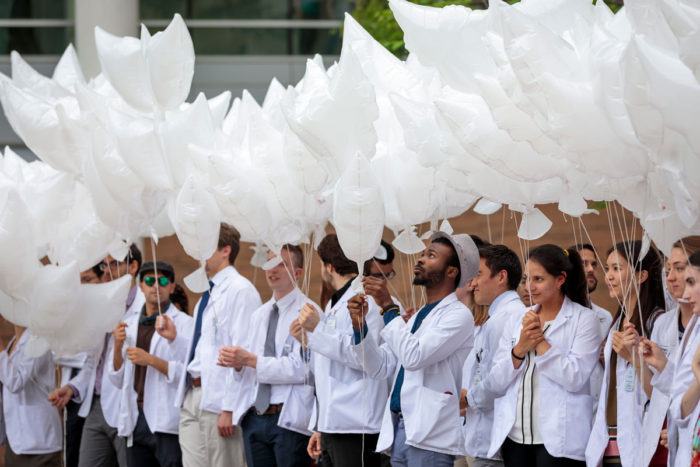 Matt Miller
Matt MillerAyo Otun (in hat) arranges dove-shaped, environmentally friendly balloons during a ceremony led by first-year medical students at Washington University School of Medicine in St. Louis. The students held the ceremony to honor people who donated their bodies to the school, as well as the families of donors. The ceremony was held May 10 in Ellen S. Clark Hope Plaza.
Medical students never forget their first patients.
The introduction occurs during first-year anatomy class in a well-lit, sterile room where rows of cadavers wrapped in muslin lay on metal tables.
“Meeting the first patient — a donor human body — is considered such a seminal moment in becoming a doctor,” said Connie Gan, president of the Class of 2021 at Washington University School of Medicine in St. Louis.
On May 10, Gan and her peers publicly honored the generous gift body donors and their loved ones had made to advance medical education and biomedical research. Hundreds of people attended the ceremony at Ellen S. Clark Hope Plaza on the Medical Campus, which included personal reflections, musical performances, a moment of silence and a release of 300 dove-shaped, environmentally friendly balloons, each representing a body donor from the past year. Medical students, who held the balloons during the ceremony, formed a circle around the plaza’s fountain before sending the balloons into the bright blue, cloud-specked sky.
Linda Harris, who attended the ceremony to honor her mother, Ann Loree, said the event surpassed her expectations. “It was lovely and graciously done, and it provided some closure for our family,” she said. “I think it’s a great tradition that should continue.”
In years past, medical students have held private appreciation ceremonies. “But after speaking with my fellow classmates during and after our anatomy class, we realized what we have learned from our first patients is invaluable to our education and future practice,” Gan said. “We wanted to extend our gratitude to the family and friends of the body donors, as well as the general public. We thought the symbolism of a dove would be appropriate in terms of peace, love and new beginnings.”
Before Gan met her first patient, she recalled feeling “excited and apprehensive, like a runner would feel before a big race. However, once I met my first patient, I immediately felt calm with the knowledge that my donor would teach me immensely in a few short months. I felt grateful and reverent for the sacrifice that the donors and their loved ones had made for our education and the service we will provide our future patients.”
Gregg Velligan attended the ceremony in recognition of his father, Frank Velligan, a musician and teacher who donated his body to the school. Several years ago, Gregg Velligan’s mother, a stained-glass artist, also donated her body. A performance by a string quartet was one of the highlights of the ceremony for Velligan, who also plans to be a body donor one day. “I know how much my father would have enjoyed the music,” he said.
The university’s Body Donor Program, coordinated through the Department of Neuroscience, has helped provide thousands of cadavers to medical students, resident physicians, clinical fellows and other trainees to gain in-depth understanding of human anatomy.
“The appreciation ceremony at the end of the anatomy course allows students to reflect on the gift the donors have made for the purpose of their medical education,” said Amy Bauernfeind, PhD, an assistant professor in the Department of Neuroscience and director of the university’s Body Donor Program. “The students realize how much they have learned from a single person, which is a very powerful experience for them. They feel humbled that one person can impact their own lives so profoundly without saying a word.”
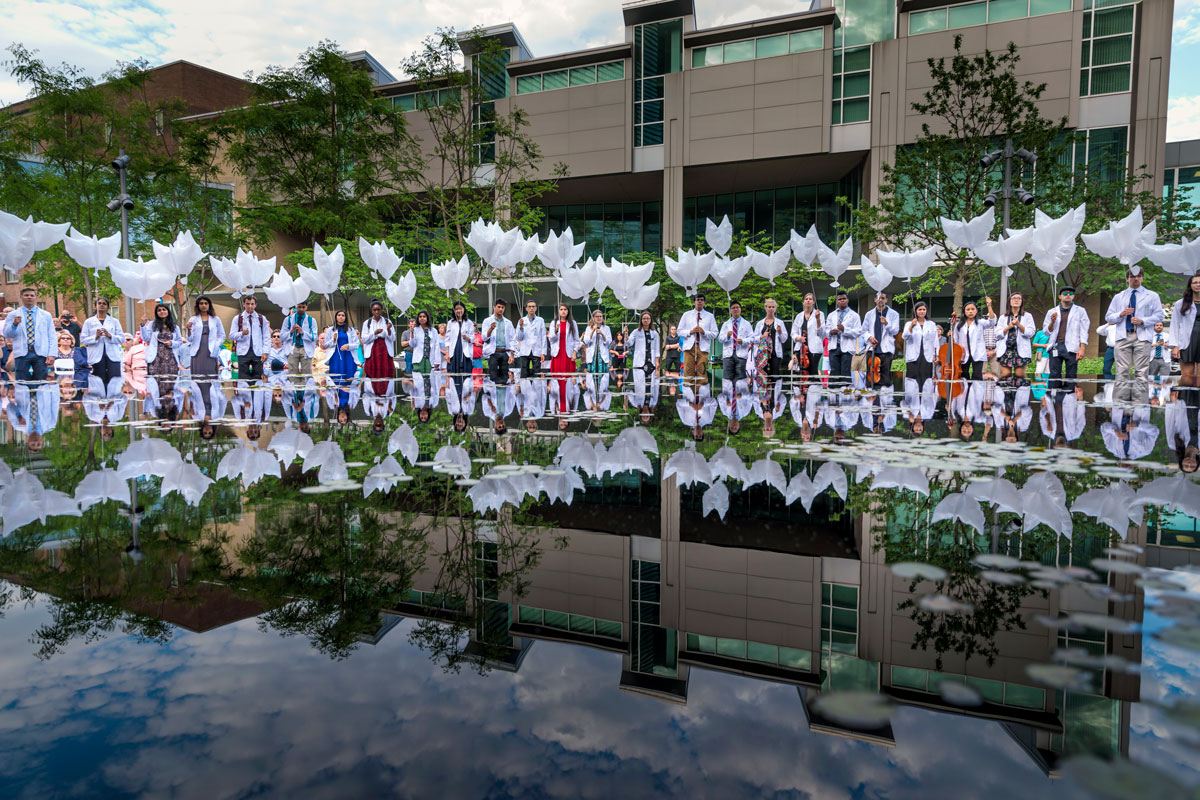 Matt Miller
Matt Miller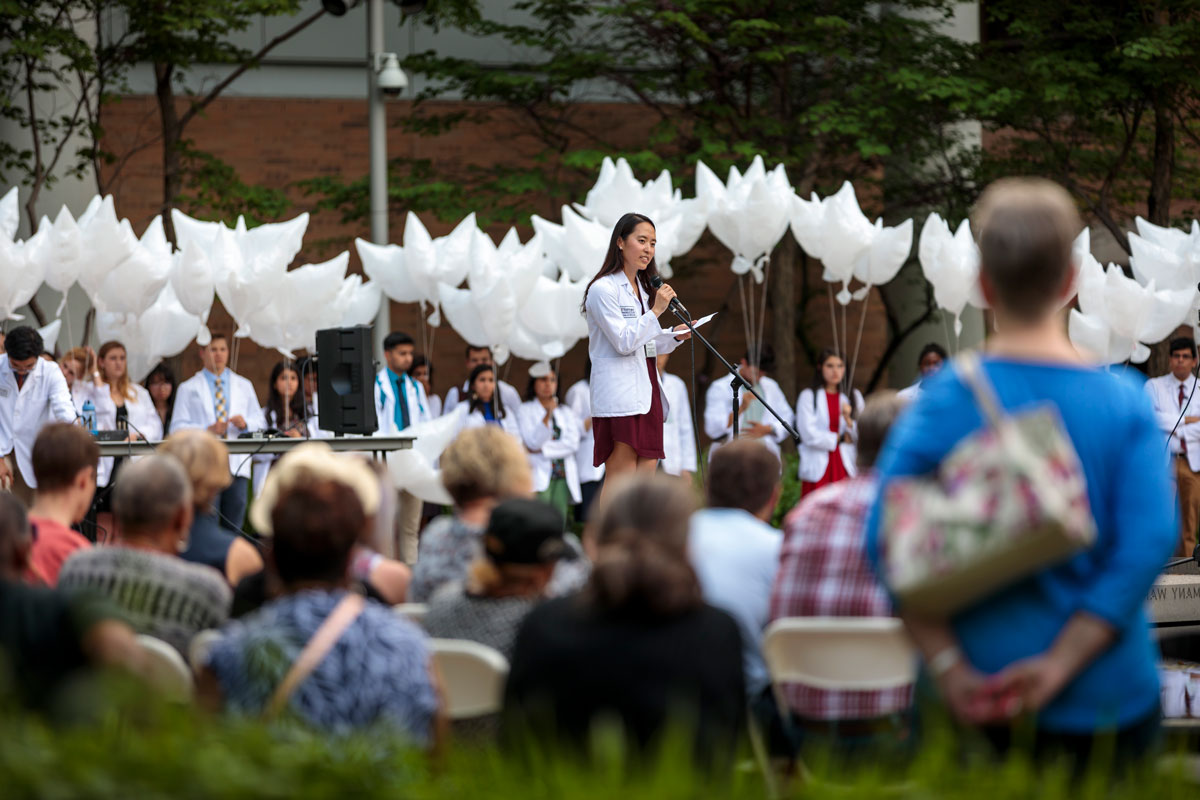 Matt Miller
Matt Miller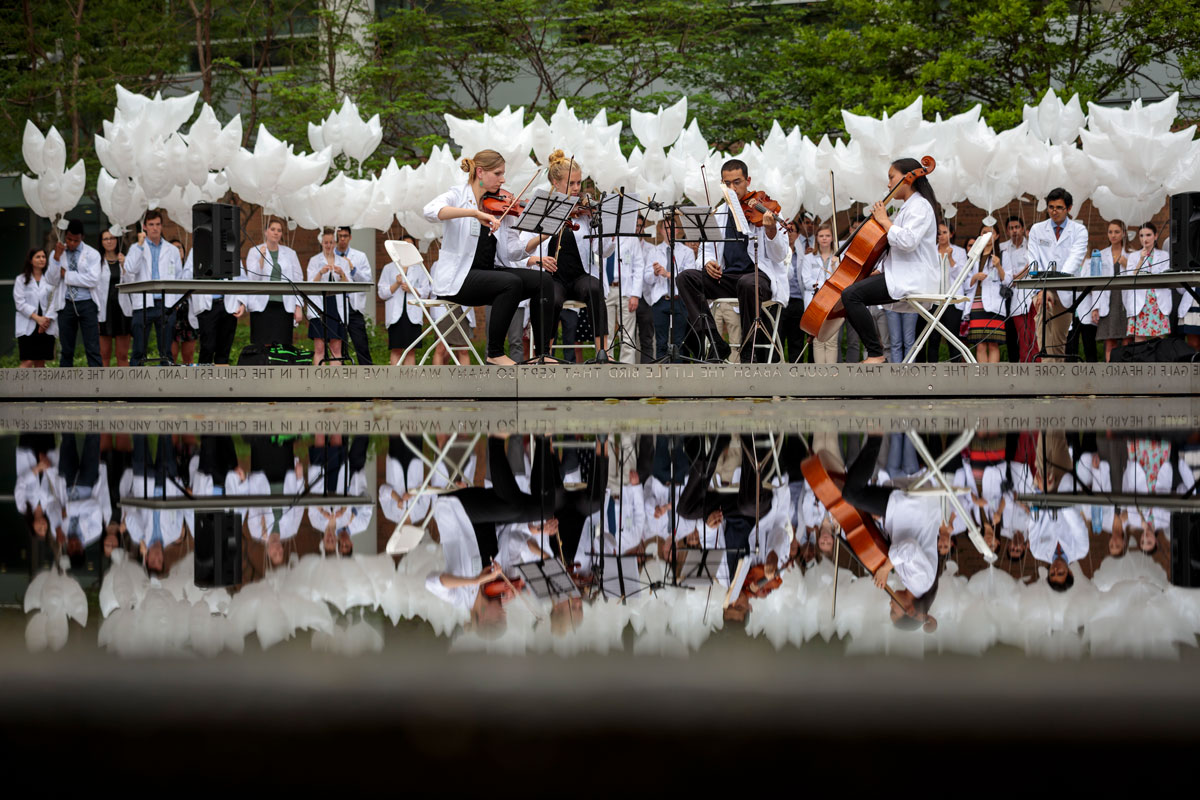 Matt Miller
Matt Miller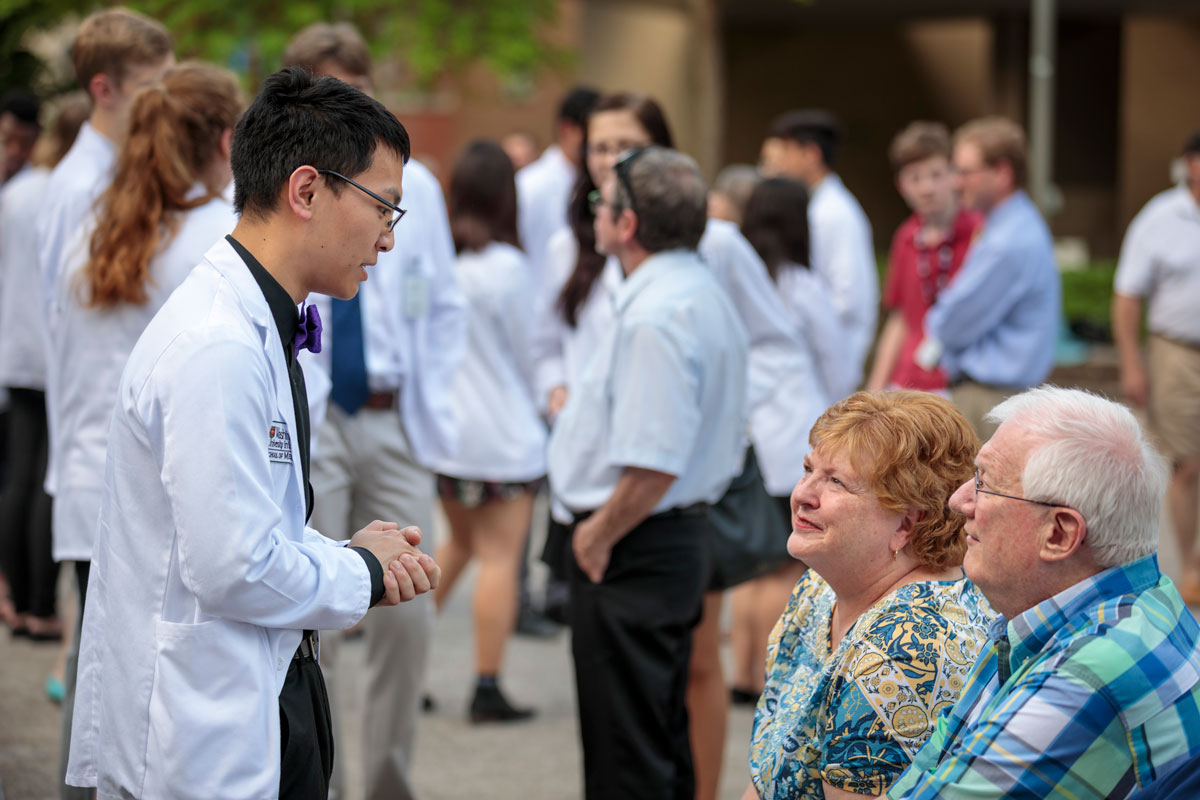 Matt Miller
Matt Miller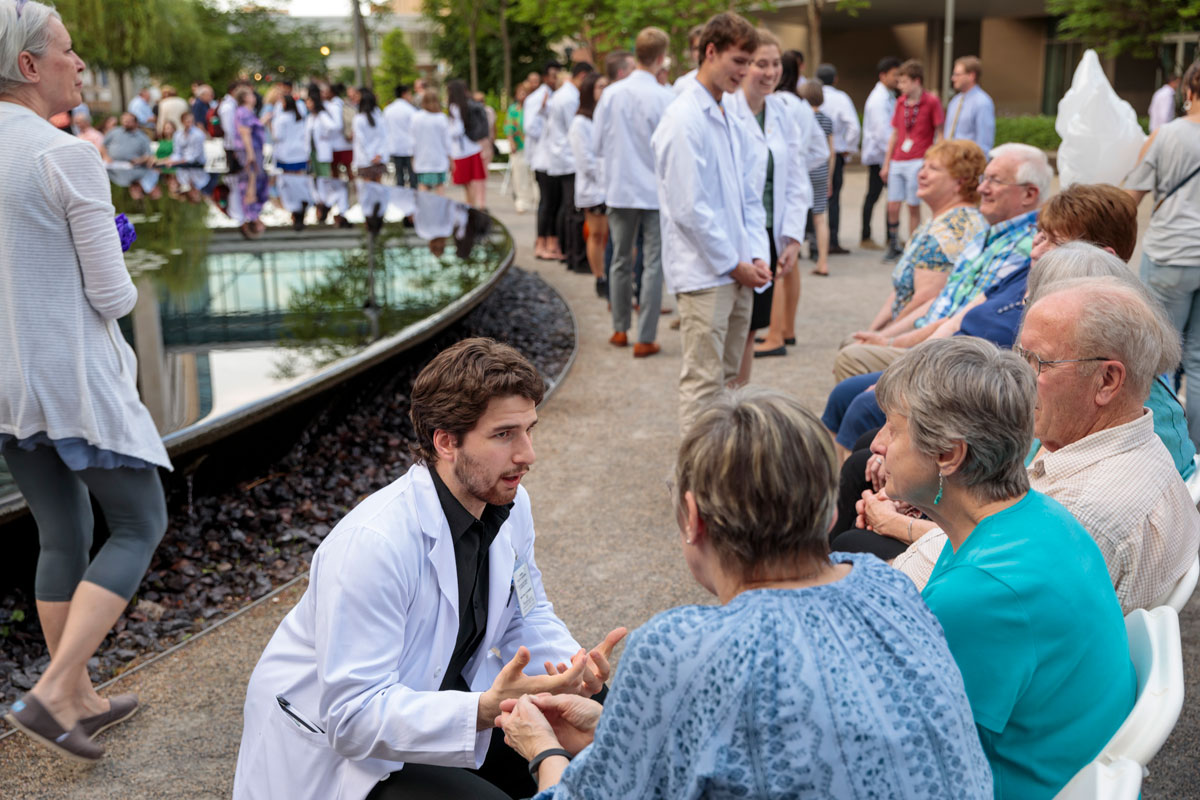 Matt Miller
Matt Miller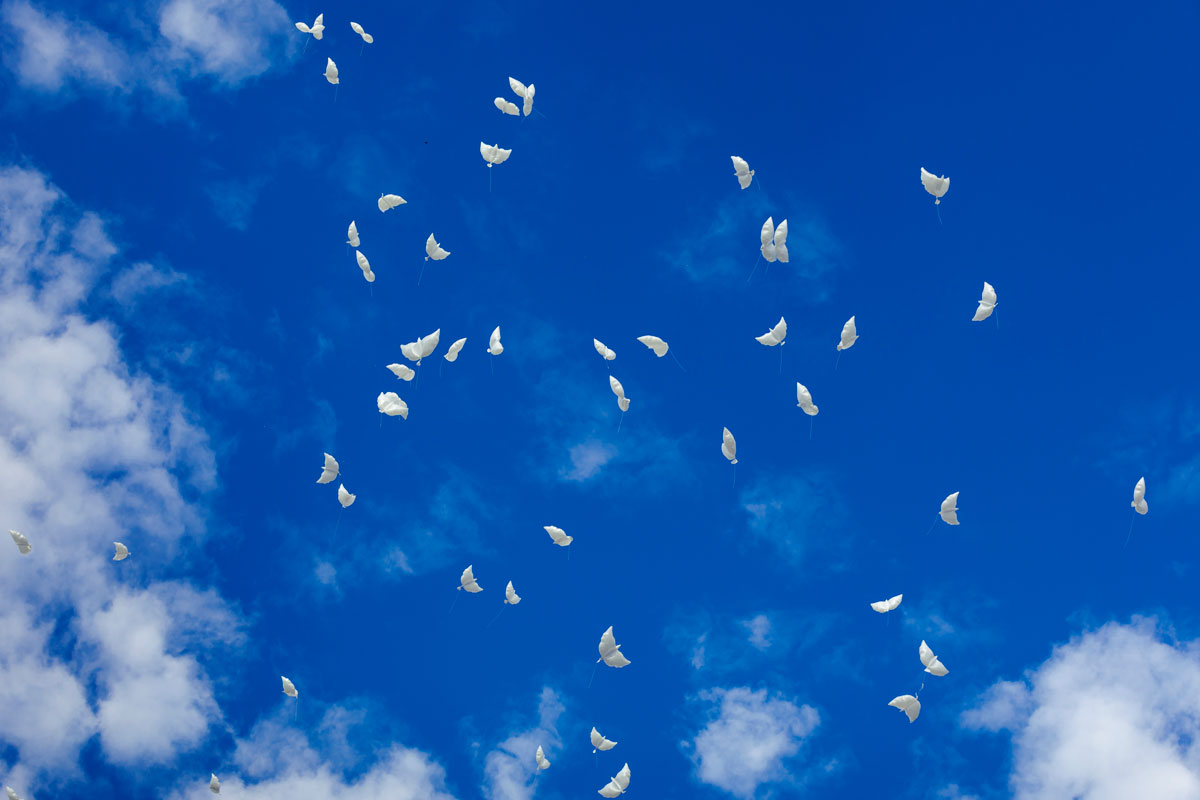 Matt Miller
Matt Miller






